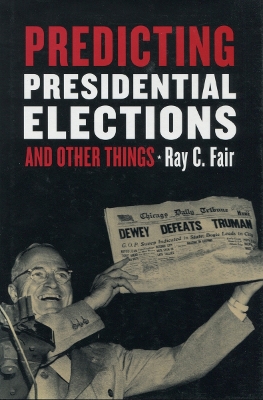What do the following events have in common? In 2000, the election between George W. Bush and Al Gore was a virtual tie. The 1989 and 1990 vintages have turned out to be two of the best ever for Bordeaux wines. In 2001, the Federal Reserve lowered the interest rate eleven times. The decade of the 1970s was one of the worst on record for U.S. inflation. In 2001, the author of this book, at age 59, ran a marathon in 3 hours and 30 minutes, but should have been able to do it in 3 hours and 15 minutes.
This book shows clearly and simply how these diverse events can be explained by using the tools of the social sciences and statistics. It moves from a discussion of formulating theories about real world phenomena to lessons on how to analyze data, test theories, and make predictions. Through the use of a rich array of examples, the book demonstrates the power and range of social science and statistical methods.
In addition to “big” topics—presidential elections, Federal Reserve behavior, and inflation—and “not quite so big” topics—wine quality—the book takes on questions of more direct, personal interest. Who of your friends is most likely to have an extramarital affair? How important is class attendance for academic performance in college? How fast can you expect to run a race or perform some physical task at age 55, given your time at age 30? (In other words, how fast are you slowing down?) As the author works his way through an incredibly broad range of questions and topics, demonstrating the usefulness of statistical theory and method, he gives the reader a new way of thinking about many age-old concerns in public and private life.
- ISBN10 0804745099
- ISBN13 9780804745093
- Publish Date 2 August 2002
- Publish Status Active
- Out of Print 16 January 2024
- Publish Country US
- Imprint Stanford University Press
- Format Hardcover
- Pages 184
- Language English
